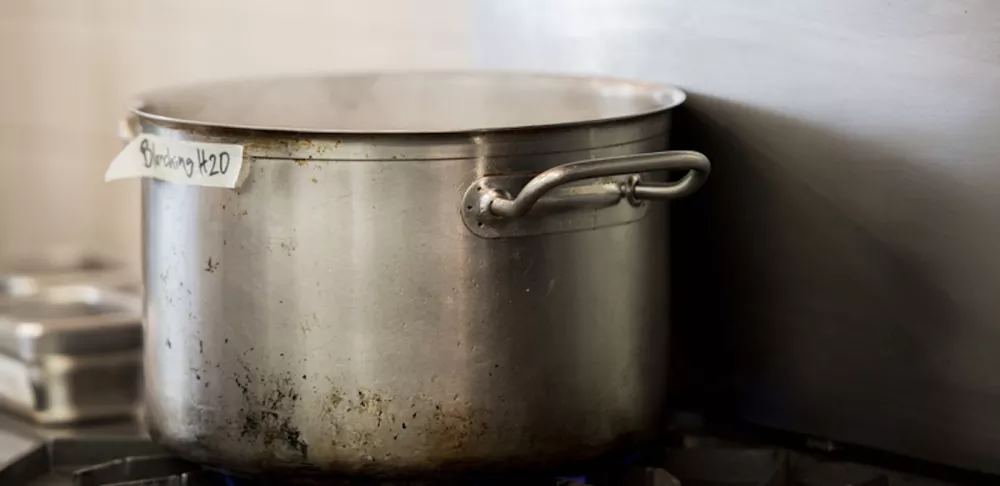At the beginning of culinary school, you're learning from the bottom up. Start to finish. The basics. And while home cooks may take this critical step for granted, that means diving head first into “stocks”. Eight hours of class, six different stocks and eight very eager students = a recipe for a great day at ICE.
Making a stock means extracting the amazing flavor hidden inside the bones of different proteins and chopped vegetables. Before we hit the stove, Chef Chris started class with basic knife skills and culinary terminology. Mirepoix (chopped onions, celery and carrots) is the foundation of many stocks, providing a subtle, but pleasing base flavor. Some cultures use a different combination of vegetables and call their mirepoix by a different name, but the concept remains the same.

While I anxiously waited to get to the stove and hover over bubbling pots, I had to wait and learn to cut my vegetables properly first. With his chef's knife in hand, Chef Chris demonstrated a rough chop, small, medium and large dice. My classmates and I spent the next 40 minutes chopping mirepoix for all the stocks we were to make that day. It felt great to have my knife in my hand, as it became easier and easier to slice through the vegetables.

Once you understand the method of making a proper stock, you can create practically any sauce, stew or soup. Carrying my mise en place for chicken stock to the stove, I grew eager to bring my stock to life. A flash of flame burst under the stock pot, the oil rippled as it heated, and the mirepoix sizzled as it was added to the pan. Mirepoix is your starting flavor; a little salt is added, and then it should sweat without creating any color. From there you add a sachet d'épices (which I mentioned in my last post), water and bones, and leave your stock to simmer for hours. The most interesting aspect for me is that idea: "just leave it alone”. At home I would stir it and move things around, checking the flavor throughout the cooking process, but Chef Chris explained that stirring produces a cloudy stock.

From there I moved on to a lesser-known stock: white veal. What is that? The base of this stock is veal bones, which are first blanched to remove any impurities. From there, they are strained and then the process continues like all stocks with mirepoix, sachet, water and bones—brought to a boil and then left to simmer.
On the other end of the spectrum, brown veal stock requires pincage. This French technique (pronounced pin-shage) involves caramelizing the bones and mirepoix with tomato paste in the oven. This concentrates their flavor, and then the bones and vegetables are (again) added to the stock pot with a sachet and water.

Stockmania continued with fish stock, mushroom stock, vegetable stock and Parmesan Reggiano stock. Parmesan stock was a shock to me, a completely new concept. Did you know you can really make a stock out of anything? All you have to do is follow the same technique; mirepoix, sachet, water, boil down to simmer.
The Parmesan stock was very interesting we used the rinds of the Parmesan to make the stock. We wrapped the rinds in cheese cloth (just in case they fall apart) and used our same stock technique as we have been doing all day. Chef Chris explained that this was actually a broth because stock requires the bones of a protein.

That day, I learned more about stocks, broths and bones than anyone would have even thought they needed to know. The stocks that we made today will be the foundation, throughout the year, for recipes in many of our classes. That beautiful Parmesan Broth will be turned into delicious French Onion Soup. Now that is something to look forward to!




